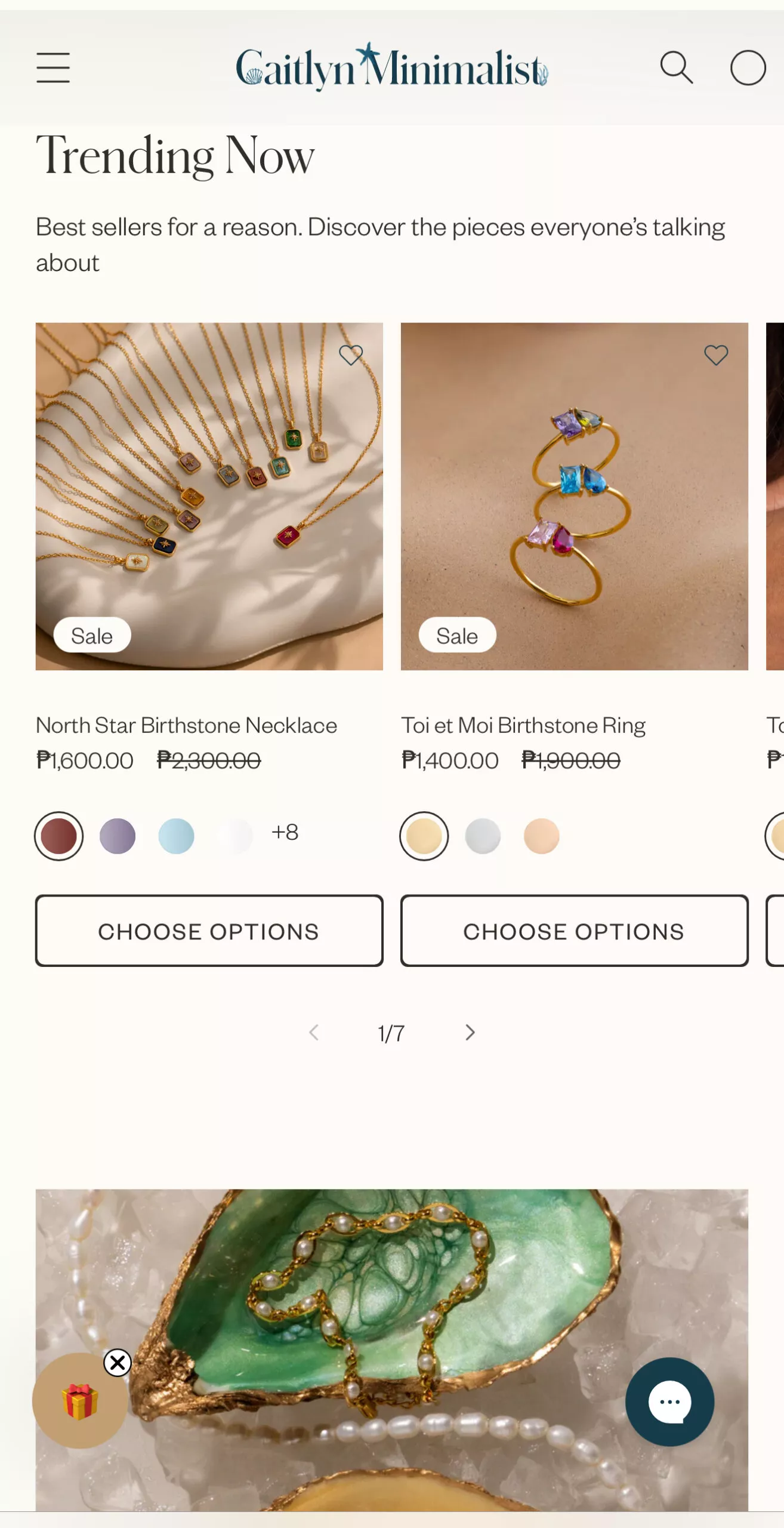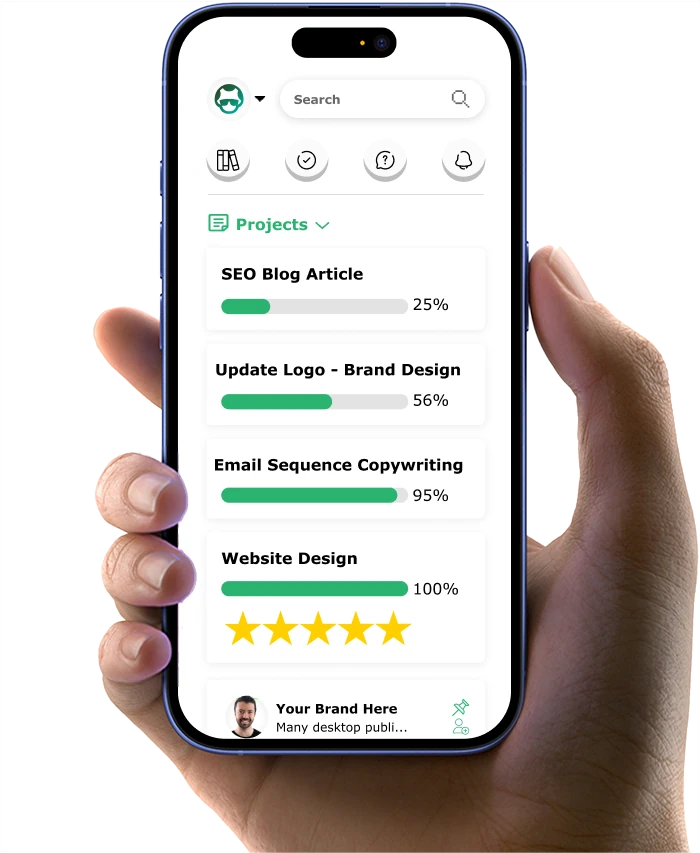Consistent Ecommerce Branding: 9 Steps to Stand Out

Consistent ecommerce branding is what helps your store stand out in a crowded market. When your colors, photos, and words all work together, customers feel like they know you. That’s what makes them stick around and come back for more.
Running an online shop is tough. You’re juggling product photos, emails, and social posts. But if your branding changes from one place to the next, shoppers notice—and not in a good way. I’ve seen new shop owners try every new style, switching up fonts and colors just to keep things fresh. Instead, it only confuses people and makes your store easy to forget. When your look is steady and familiar, you become the store shoppers remember.
Research shows that how your store looks really matters to buyers. The right images and a smooth, matching experience help build trust. It’s not about being fancy. It’s about being clear, simple, and reliable every time.
In this guide, you’ll discover:
- The visual change that makes your shop feel more trustworthy
- A simple tool to help your team avoid branding slip-ups
- The photo style tweak that puts shoppers at ease
- Why checking your site on a phone could mean more sales
- The easy habit that keeps your brand sharp as you grow
Want to see how a few small changes can make your store more memorable? Let’s dive in...
Want to get all your marketing and funnel work done—without the headaches of hiring a team? Download our free guide: 33 Marketing Projects You Can Delegate to Growbo and discover how to save 100+ hours a month, grow faster, and scale without the overhead.
Ecommerce Branding Step #1: Choose and Apply Your Brand Colors & Fonts
Consistent branding in ecommerce starts with your colors and fonts. When you use the same palette and typography everywhere, your store feels familiar and trustworthy. This is what sets you apart from competitors who change styles too often or rely on generic templates. Your color choices and font pairings are the visual shorthand for your brand’s personality. If you get these right, customers will recognize your store in their inbox, on social media, and every time they visit your site.
Many ecommerce stores struggle because they pick colors and fonts at random or let trends dictate their look. This confuses shoppers and makes your brand forgettable. Instead, select two or three colors and one or two fonts that match your brand’s values and audience.
Document your choices in a simple style guide so your team and partners always know what to use. This step alone can cut design time and reduce mistakes. According to HubSpot, consistent branding across all platforms can increase revenue by up to 23%.
Step-by-Step
- Review your top competitors (for example, Allbirds or Glossier) and note their color and font choices. Aim to stand out while staying relevant to your niche.
- Pick two or three main colors that reflect your brand’s tone. Assign hex codes so they’re easy to use.
- Choose one or two fonts for headings and body text. Make sure they’re easy to read on all devices.
- Create a short style guide with your color palette and font names. Share it with everyone who designs for your store.
- Apply your colors and fonts everywhere: website, emails, ads, and social posts. Check for consistency each week.
KEY INSIGHTS
- Consistency in colors and fonts builds trust and brand recall.
- A style guide helps your team avoid common design mistakes.
- Review your designs weekly to make sure your look stays unified as you grow.
Put these steps into practice and you’ll see your brand become more recognizable, making it easier to earn customer loyalty. Next, you’ll learn how to create a unified style for all your product photos and graphics.
Ecommerce Branding Step #2: Standardize Your Photo and Image Style
Consistent ecommerce branding depends on unified product images and graphics. When all photos follow the same style, your store looks more professional and builds trust with shoppers. Inconsistent imagery, on the other hand, can make your store appear disorganized and less credible, which leads to lower conversion rates. In fact, a study shows that 75% of online customer rely on product photos to make purchasing decisions.
Start by choosing a visual approach that fits your brand: bright backgrounds, minimal props, or a specific filter. Apply this style to every product and lifestyle image. This makes your listings look cohesive and helps customers recognize your brand across every channel. If you work with multiple photographers or designers, provide clear image guidelines to ensure consistency.
Quick Implementation Guide
- Pick a background color or setting that works for all products.
- Set lighting and editing standards for every photo shoot.
- Document your image style in a guide and share it with your team.
- Review new images before publishing to catch inconsistencies.
KEY INSIGHTS
- Unified imagery increases shopper confidence and brand recall.
- Clear image guidelines reduce confusion when working with collaborators.
- Regular reviews help catch off-brand visuals before they go live.
Apply these steps to make your store look more polished. Next, let's make sure your branding works on every device your customers use.
Ecommerce Branding Step #3: Ensure a Seamless Experience on All Devices
Consistent ecommerce branding isn't just about visuals, it's about experience. Your website needs to look and work great on phones, tablets, and computers. If your store fails to load correctly or images don't fit the screen, shoppers will leave, and your brand will lose credibility. According to Google, 53% of mobile site visitors leave a page that takes longer than three seconds to load.

Responsive design is now a standard in ecommerce. Test your site regularly on different devices to catch issues early. This proactive approach saves time and money, and it shows customers that you care about their experience. Make sure your fonts, colors, and images look just as good on a mobile screen as they do on a desktop.
Process Walkthrough
- Open your store on a phone, tablet, and desktop.
- Check that images resize and text stays readable.
- Test navigation: Are menus and buttons easy to use?
- Note any issues and fix them in your website builder or with your developer.
- Repeat this check monthly as your site changes.
KEY INSIGHTS
- Responsive design is essential for customer trust and sales.
- Regular device checks prevent costly mistakes and lost sales.
- Consistency across screens keeps your brand strong everywhere shoppers find you.
Now that your store works everywhere, let's add helpful design touches that make shopping enjoyable.
Ecommerce Branding Step #4: Add Delightful and Helpful Design Details
Consistent ecommerce branding includes small design details that make shopping enjoyable. Subtle animations, friendly pop-ups, and reassuring microcopy can guide customers and make your store more memorable. These touches show that you care about the user experience and help shoppers feel confident as they navigate your site.
Use these enhancements sparingly. Too many flashy effects can distract or annoy shoppers. Focus on adding value, like a gentle animation when an item is added to the cart or a clear message at checkout. Test new features with real users to make sure they help, not hinder, the shopping process.
Common Mistake to Avoid
- Adding too many pop-ups or animations that distract from the main shopping experience.
- Forgetting to test new features on mobile devices, where small screens can make effects overwhelming.
Thoughtful design details can set your brand apart. In the next section, you'll see how to keep your content styles consistent everywhere you communicate.
Ecommerce Branding Step #5: Maintain Consistency in Content Styles
Consistent ecommerce branding extends to every piece of content you share. Your emails, blog posts, and social updates should all look and sound like they come from the same brand. Using templates and a defined voice ensures your audience always knows it's you, no matter where they see your message.
Templates save time and prevent off-brand mistakes, especially as your content output grows. A clear brand voice makes your business memorable and helps build lasting relationships with customers. Review your content regularly to maintain consistency and catch any drift away from your guidelines.
Do This / Not That
- Do This: Use the same email template for every campaign/Not That: Change your email design every week
- Do This: Keep blog post headers and image styles consistent/Not That: Use random fonts and colors in blog posts
- Do This: Stick to a set of branded social media graphics/Not That: Post images with clashing styles or watermarks
KEY INSIGHTS
- Templates and a defined voice make your brand instantly recognizable.
- Regular reviews catch off-brand content before it goes live.
- Consistent content builds trust and drives repeat business.
Focus on these actions to strengthen your brand's voice and appearance. Up next, you'll see how to make your store accessible to every shopper.
Ecommerce Branding Step #6: Prioritize Accessibility for All Shoppers
Consistent ecommerce branding means making your store easy to use for everyone, including shoppers with disabilities. Accessibility is not just a legal requirement in many regions, it’s also a sign of respect for your entire audience. When your site is accessible, you open your brand to more customers and show you care about every shopper’s experience.
Many stores overlook accessibility, which leads to lost sales and negative perceptions. Common issues include tiny text, low-contrast colors, and missing image descriptions. These mistakes can make it impossible for some customers to browse or buy. Instead, focus on clear fonts, high-contrast color combinations, and alt text for every product image. Run regular accessibility checks and ask for feedback from users with different needs.
Quick Accessibility Checklist
- Use at least 16px font size for all body text.
- Choose color combinations that meet WCAG contrast standards.
- Add descriptive alt text to every product and banner image.
- Test your site with free accessibility tools and screen readers.
KEY INSIGHTS
- Accessibility expands your customer base and builds trust.
- Small changes like bigger text and better contrast can make a big difference.
- Regular testing prevents accidental barriers for shoppers with disabilities.
Next, let's look at how to personalize your store without losing your brand's signature style.
Ecommerce Branding Step #7: Personalize While Preserving Brand Consistency
Consistent ecommerce branding doesn’t mean every customer gets the same experience. Personalization can boost engagement and sales, but only if your brand’s look and feel remain intact. Shoppers should always know they’re buying from you, even when content or offers are tailored to their preferences.
Problems arise when personalization tools override your brand’s colors, fonts, or layouts. This confuses customers and weakens your brand identity. To avoid this, use dynamic content blocks and recommendation engines that fit within your established templates. Make sure product suggestions, banners, and emails always follow your style guide.
Implementation Steps
- Define which elements can be personalized (e.g., product recommendations, banners) and which must remain fixed (e.g., logo, colors, fonts).
- Choose personalization tools that let you control design settings.
- Test all personalized elements to verify they match your brand guidelines before launch.
- Monitor customer feedback and conversion data to ensure personalization is effective without sacrificing recognition.
KEY INSIGHTS
- Personalization works best when it enhances, not replaces, your brand identity.
- Consistent templates prevent off-brand experiences.
- Careful testing and monitoring protect your store’s reputation as you scale personalization.
Now, let's make sure your entire team can keep your branding consistent as your business grows.
Ecommerce Branding Step #8: Create and Share Simple Design Rules with Your Team
Consistent ecommerce branding is a team effort. As your store grows, more people will create content and update your site. Without clear design rules, it’s easy for branding to drift. A concise style guide keeps everyone on track and prevents costly mistakes.
Generic advice like "just use our logo" isn’t enough. Your guide should cover colors, fonts, imagery, and tone of voice. Share it with every team member, contractor, or freelancer who works on your brand. Schedule regular reviews to ensure everyone follows the rules and to update guidelines as your brand evolves.
Team Style Guide Essentials
- Color palette with hex codes and usage examples.
- Font names and sizes for headings, body, and buttons.
- Image style examples and do’s/don’ts.
- Voice and tone guidelines for written content.
- Approval process for new designs or content.
KEY INSIGHTS
- Clear, accessible design rules save time and reduce errors.
- Regular reviews keep your brand consistent as your team grows.
- A shared style guide is the foundation for scalable, unified branding.
With these rules in place, your brand will stay strong and recognizable, no matter how large your team becomes.
Ecommerce Branding Step #9: Regularly Audit and Improve Your Store’s Design
Consistent ecommerce branding requires ongoing attention. Even the best-designed stores can drift off-brand as new products, campaigns, or team members are added. Regular design audits help you spot inconsistencies early and keep your brand looking sharp and professional. This process not only protects your reputation but also ensures customers always know what to expect from your store.
Many ecommerce teams skip regular reviews, relying on memory or scattered feedback. This results in outdated banners, mismatched fonts, or clashing colors that erode trust. Instead, schedule a monthly design audit. Set aside time to review your site, emails, and social media for alignment with your style guide. Involve team members from different departments to catch issues you might miss.
Action Plan
- Compare your current website, emails, and ads to your style guide.
- Look for outdated images, off-brand colors, or inconsistent fonts.
- Gather feedback from customers and team members about visual clarity and ease of use.
- Update or replace any elements that don’t match your guidelines.
- Track design changes and their impact on customer engagement and sales metrics.
KEY INSIGHTS
- Monthly audits prevent small design issues from becoming big problems.
- Teamwide involvement leads to more thorough and objective reviews.
- Measuring the impact of design updates helps you focus on what matters most for your brand’s growth.
Build this audit into your workflow to keep your branding strong and your customers coming back. With all these steps in place, your store will stand out for clarity, consistency, and trust.
Wondering how maintaining consistent branding across all touchpoints could increase your revenue by more than 10%? Here are ten proven strategies to help you achieve that growth.
Want to get all your marketing and funnel work done—without the headaches of hiring a team? Download our free guide: 33 Marketing Projects You Can Delegate to Growbo and discover how to save 100+ hours a month, grow faster, and scale without the overhead.
Conclusion
Building a brand that customers remember starts with small, steady steps. When your colors, photos, and voice all match, shoppers feel right at home—and they’re more likely to come back.
It’s not always easy to keep everything on track, especially when you’re busy running your business. But you don’t have to do it alone. Consistency is easier when you have a team in your corner.
Here’s what you can do right now:
- Pick and stick to your brand colors and fonts—use them everywhere so your store always feels familiar.
- Set clear rules for photos and graphics so every product looks like it belongs in your shop.
- Check your store on different devices and make sure it’s easy for everyone to use.
If you’re curious what it’s like to have marketing pros handle your branding and daily tasks, why not give Growbo a try? Get a full week of unlimited support—real people, real results, no stress and see how much easier your marketing can be.
If you want to talk through your branding goals or have questions about how Growbo can help, schedule a call with our team. We’re here to help you every step of the way.
Have your own tips or questions about branding? Share them below! Let’s help each other build brands that feel as good as they look.
Keep Growin', Stay Focused,
Image Credits:
1. https://www.warbyparker.com/
2. https://www.glossier.com/collections/fragrance
3. https://caitlynminimalist.com/
4. https://cottonbureau.com/p/7WSTDA/shirt/human-intelligence-badge#/20486351/tee-women-true-to-size-tee-athletic-heather-poly-cotton-s
5. https://us.dollarshaveclub.com/collections/electric-grooming
6. https://www.xbox.com/en-US/xbox-game-pass/pc-game-pass
7. https://www.nike.com/nike-by-you
8. https://polaris-react.shopify.com/
9. https://www.target.com/























